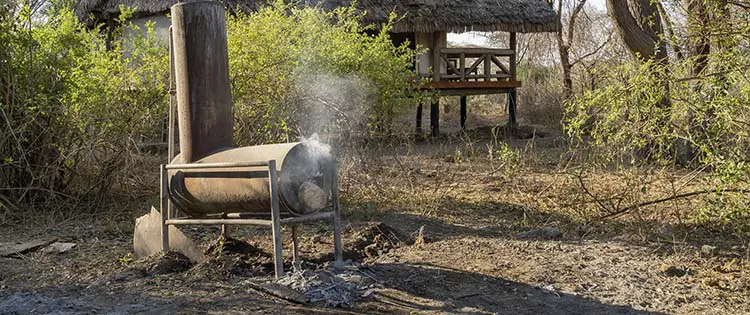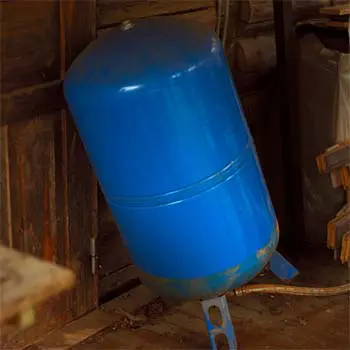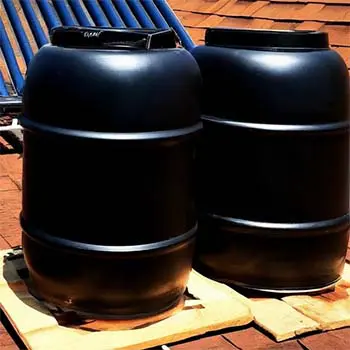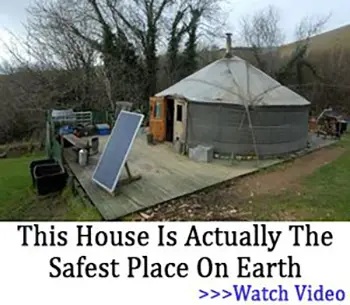How many times have you found yourself without hot water without electricity? It could be a power outage, the hot water heater failing, or a water supply disruption.
Regardless of why you are without hot water, it is more than a minor inconvenience. We need hot water to clean ourselves, wash dishes, and launder our clothes.
The good news is that there are many projects that you can build to provide a constant supply of hot water in those times when getting it from traditional sources is impossible.
Even better, these are things that you can construct today and keep on hand for those times that you need them.
Endless Hot Water Without Electricity: Wood Stove Water Heater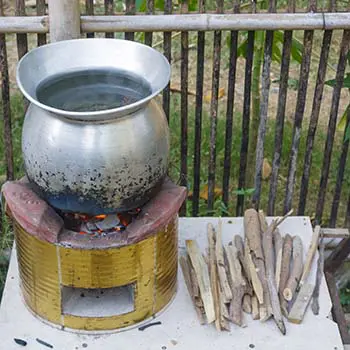
There are a few ways to convert a wood stove into a continuous hot water source. The easiest way is to use a wood stove with a water heater attached. This comes at a cost though, and making one yourself can often be less expensive.
You can make a wood stove out of an old propane tank, or steel drum, or fabricate one out of sheet steel. There are even ways to turn an old ammo can into a wood stove.
Related: How To Purify Water Off Grid
A wood stove’s chimney gets extremely hot, and that heat energy is wasted as it radiates into the air. Wrap flexible copper plumbing pipe around the chimney to take advantage of this wasted heat.
To do this, fill the pipe with sand and wrap it around the chimney in a coil. Once it’s shaped, remove the sand and solder plumbing fixtures on each end. Cold water enters the bottom, and hot water exits through the top.
Alternatively, you can create a zig-zagging copper pipe pattern around the stove. This method requires more soldered joints, making it harder to build. However, using a larger diameter pipe allows more water to heat as it travels around the stove.
You’ll need a way to store the hot water, like an old hot water tank. Wrapping the tank in insulation will help keep the water hot.
Once everything’s set up, fire up the stove and let the water flow through the plumbing. Just be careful not to let the water sit stagnant. If it does, it could boil and create steam, causing the fittings to burst.
Wood Stove Hot Water Tank
If you have some fabrication skills and access to stainless steel, you can build a custom water tank that will hang off the side of the stove. Alternatively, a stainless-steel tank placed on the stove will also work quite well.
You’ll have to ensure that the water inside these tanks does not boil because that will generate steam and create a lot of pressure, leading to the tank bursting.
If you go this route, you’ll need to ensure that all welds on and inside the tank are sanitary welds so as to not contaminate your hot water.
Endless Hot Water Without Electricity With Rocket Stove Water Heater
A rocket stove water heater works like a wood stove heater, but the copper water pipe coil is built into the stove’s body. Like the wood stove, you’ll need an old hot water tank to store the heated water.
Rocket stoves are more efficient than regular wood stoves. This makes them a great option when fuel access is limited, giving you hot water without electricity.
Solar Water Heaters
You can use the sun to heat water in several ways. This works great in warm climates or during the summer. However, if you can set up a solar water heater inside your home where it gets direct sunlight, you can even use it in the winter.
Building a solar water heater is easy, especially if you have basic construction skills.
One great option is to place a coil of PEX pipe, painted black, in a box with a plexiglass lid. Attach fittings to the inlet and outlet of the pipe. These fittings will let you connect hoses and valves, giving you hot water without electricity.
Solar Drum Heater
You can also use 55-gallon drums painted black and placed on your home’s roof as a solar water heater. Since the drums will be elevated, they will provide water pressure as gravity pulls the water down.
You’ll need to ensure that your roof can handle the extra weight, and you’ll probably have to build and install a platform to hold the drums.
Fire
Sometimes, the old ways are the best. If you have fire and water, you have endless hot water. You can hang a pot over a campfire or make a fire pit with an elevated grate on top of which you place a large pot full of water.
As long as you have fire, the water will be heated, but you won’t be able to plumb it into your home’s plumbing. Failure of the grid shouldn’t keep you from a steady supply of nice hot water. These projects are worth investing in now so that you’ll be good to go when the grid goes down.
Even though your access to this heated water will look much different than when we have unlimited access to electricity, you’ll be the only one on the block with unlimited clean, piping hot water.
This article first appeared here.
You may also like:
This Homemade Device Can Power Up Your Entire House 7 Days in a Row (Video)
How To Make The Hoover Stew Of The Great Depression
50 Uses For Aluminum Foil In Your Homestead
Survival Hacks From The Civil War That Are More Useful Than Ever

